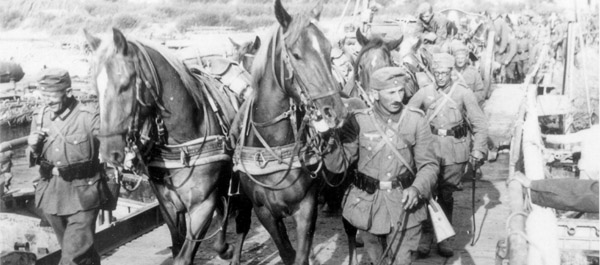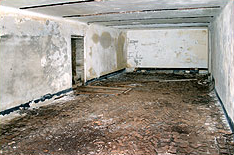Interesting that they don't seem to display any identifier for the individual aircraft. Any particular reason for that?
Again, only speaking to army air units in New Guinea (and Rabaul, New Britain), a rare few did yet most didn't. Here is where I'm going to have trouble showing you examples. I lost tens-of-thousands of images I had collected, generated, enhanced along with ALL of my research notes and text in a 2-HDD and even backup crash (I could have paid to retrieve it, but, I lost all heart and figured it was time to move on).
To help you understand, in brief, here is something I wrote a number of years ago (found on the web) that describes how air units are subdivided:
Using New Guinea as an example and working from the top down:
Koukuusogun = Supreme Air Army...This group would of been the big wigs back in Japan.
Koukuugun = Air Army...This is the group over an entire region "at times"...Initially in New Guinea the 6th Hikoushidan controlled all Army Air Corps operations. Eventually the 4th Koukuugun was established taking over control of all army air groups in New Guinea and though having ultimate say and being the communicator with Japan, often delegating control to lesser units. However, a Koukuugun in and of itself is not a combat operational group. It's the command aspect within a region, not the actual fighting group though it does have a certain amount of aircraft, some even combat aircraft in its inventory. What would be directly attached to a Koukuugun would be Hikoushidans, Hikoudans, numerous types of supporting ground forces and supply units.
Hikoushidan = Army Flying/Air Division...These are large groups made up of numerous Hikousentai, Hikoudans, Dokuritsu Chuutai, as well as countless supporting ground units (radar, AAA, repair, base building, etc.). A Hikoushidan and the units attached to it make for all intents and purposes in most cases a complete air combat force capable of entering a region, establishing bases and support yet also carry out any type of air operation with the hikoushidan being the central command group (like a koukuugun). The amount of forces within them fluctuates quite a bit as groups are moved, pulled out and added. The 6th Hikoushidan controlled all of New Guinea and New Britain's Army air forces at one time with very few units, then as the 4th Koukuugun took over their forces actually grew. However, for the most part they still maintained day to day control over the area. Like a Koukuugun, directly associated Hikoushidan personnel and aircraft are not intended for actual combat, yet the groups attached to them are making them a complete air combat package.
Hikoudan = Army Flying/Air Brigade...Much smaller and more specialized then a Hikoushidan. Typically made up of 2 (though possibly more) Hikousentai, they are specialized to the point that except for transport aircraft for the most part utilize just one type (as an example the 14th Hikoudan was made up of a core element of the 68th and 78th Sentai, so a Hien/Ki-61 brigade). In some cases however, some Hikoudan also include other specialized units typically Dokuritsu Chuutai to make them more combat effective. Using the 14th again, though a Hien fighter hikoudan, they also had attached a transport, recon, photographic and raider chuutai. Though having their own ground personnel, past that a Hikoudan is so specialized it cannot carry on full operations on its own (recon, bombing, fighters, etc.). The Hikoudan once again on its own is not a combat unit typically taking on more of a command and coordination role, though have senior enough personnel that they can on a limited basis take over larger hikoushidan command size duties (as the 14th did on occassion in New Guinea). Though they may be directly attached to a Hikoushidan, they may also be directly attached to a Koukuugun making them almost peer with a Hikoushidan.
Hikousentai = Army Flying/Air Regiment...These are true combat units at their core level. Varied in size from 2-4 chuutai, they are typically made up of a command flight and 3 chuutai for fighter groups and will roughly have 30-45 aircraft at their disposal of a single specific type. A hikousentai may be directly attached to a hikoudan or hikoushidan, yet are never independant in the regard like a hikoudan may be.
Hikoudaitai = Army Flying/Air Battalion...Smaller then a sentai (perhaps 2 chuutai and a command flight), these I "believe" are more of a bomber unit structure or perhaps simply bridging the gap between a hikousentai and dokuritsu chuutai.
Dokuritsu Chuutai = Army Flying Independant Companies...A Dokuritsu Chuutai is a very specialized unit yet more so as to duties. Might be heavy fighters, ground attack, bombing, recon, etc., yet they are so extremely specialized they must be attached to a Hikoushidan or Hikoudan like a Hikousentai is. They help make up shortfalls in either type of the larger units to make them more fully rounded in a combat capacity, somewhat a "fill in the gaps" type of unit yet still considered a seperate entity.
Chuutai = Army Air Company...A Chuutai further breaks up a Hikousentai to make it more controlable and more flexible. 45 aircraft and pilots under a single command control is a bit unwieldy, so reducing that down to 9-12 aircraft to make up 3-4 chuutai helps grant a bit more direct control. Further it adds flexibility in that wherein a Sentai may be based at X, a single Chuutai can be detached and based elsewhere for a brief period most likely with its own groun personnel to grant their assitance where needed. Further it allows for breaking up of specific missions easier, and simply makes the Sentai more flexible and controlable.
Shoutai = Army Flight...Made up of 3-4 aircraft, 3-4 of these will make up a chuutai. This is the smallest core element of any unit and will always I would think fly together as a team or group in combat (think of a lead and a wingman plus a third, or two pairs all flying together).
Once you get down to the hikousentai level, you'll note the entire hikousentai uses the same type of aircraft (in the case of the 68th and 78th, Type-3 Fighters/Ki-61). The entire HS will use the same basic tail emblem. That hikousentai is further subdivided into chuutai, and each chuutai paints that emblem in their own color (typically lt.blue=command, white=first, red=second, yellow third). In
very rare cases, once those chuutai are fractioned into shoutai, they might designate each flight by 1,2,3,4 stripes (again, very rare).
For the most part, however, pilots are NOT assigned a specific aircraft. EXCEPT-- Command (as in chuutai lead) aircraft were often denoted with varied styles of stripes (see the image above... the stripe mid-fuselage). That said, some aircraft did have unique markings. Sometimes a personal emblem (very rare, only aces). Sometimes one or two katakana (Japanese letters) on the tail. And in the case of a Hien being transported to Truk on an army aircraft carrier, a spiral spinner. Each plane, however, often had on the wheel cover a number applied (for maintenance differentiation).
But-- I suspect in most cases they were maintenance applied markings, NOT pilot applied (like a totem for luck).
The reason was, initially, the best pilots were picked for each mission, and then took whatever aircraft was available due to in-service/maintenance condition. Very quickly, personnel became ill with the numerous tropical diseases... so, if you had aircraft designated per/pilot, then you would never fill a mission due to who's aircraft was operational. Further, in short order the 5th Air Force decimated the aircraft in raids (which I had some amazing air-strike photos). That left only 3-9 out of 45 aircraft available until new ones arrived, which often were destroyed the next day. Hien/Ki-61 units were reduced to using old abandoned Ki-43-I & II aircraft once other units left. Finally, due to the fabric control surfaces, you'll find countless mish-mashed markings as the rudder would be cannibalized from other aircraft.
So, considering those problems and others, designating a specific aircraft to a specific pilot was simply impractical.
As an example, a gentleman shared with me a photograph his uncle captured in Hollandia. I was stunned, the conditions suggested it was the never before seen crash of the 'Hero of Wewak,' Major Shogo Takeuchi, 68th Hikousentai. Once I worked through it, I had no answer. Upon a second photo he produced, the aircraft proved out to be a 78th Ki-61 instead... BUT, that meant little. Being a top pilot, it would not be surprising for 68th and 78th pilots to be merged, and for Takeuchi to be flying a 78th Hien. But, my crash happened... and it broke me.
Here is that research on the Wayback time machine (the only documentation left). Please be kind if you read it. I was then struggling with my literacy significantly more than now.:
78th Sentai Forum • View topic - Last Flight of the Hero of Wewak.......Maybe......
Hope that answers your question... hehe

K2



